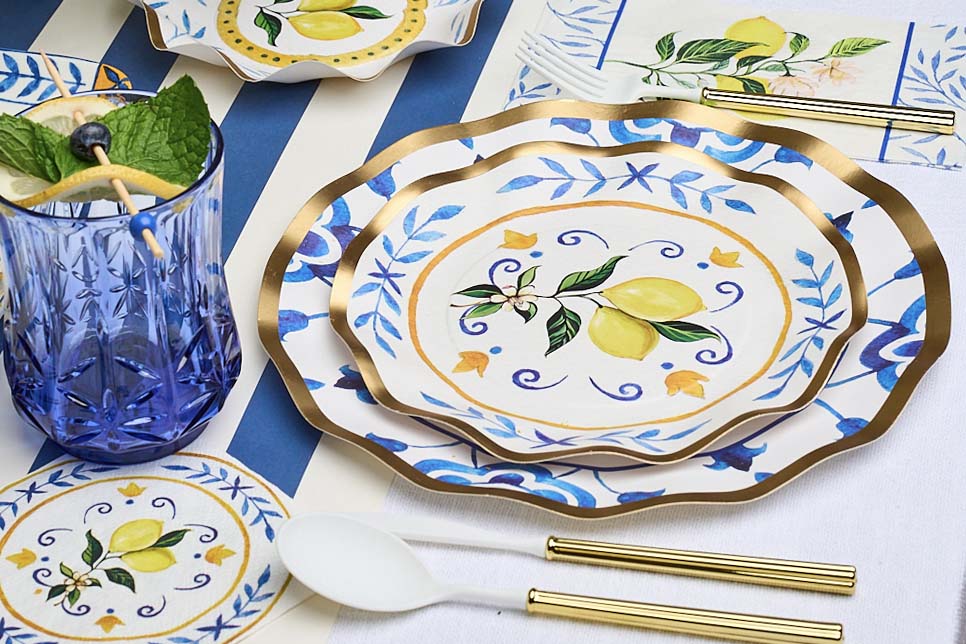Is Walnut Good for Cutting Boards?
When it comes to wooden cutting boards, there are dozens of wood types available, each with their pros and cons. But if we had to pick favorites, walnut wood would definitely be one of our top choices. From its dark, elegant appearance to its long-lasting durability, there’s very little not to love about walnut wood.
If you’re shopping for a new wooden cutting board and are thinking of investing in one that’s made of walnut, then check out this guide from Sophistiplate on what makes walnut such a great choice for your next cutting board.
A Brief Overview of the Walnut Tree
Although there are a few different types of walnut trees, the one we’re most likely familiar with is the English walnut tree, characterized by the fruit it bears—the common walnut. Originating (most likely) in modern-day Turkey, the tree was cultivated by both Greeks and Romans for centuries.
The walnut eventually became a staple in Middle Eastern cuisine and soon enough, made its way to Europe. When it arrived in England during medieval times, walnuts were mainly used to make sauces that accompanied meat dishes.
When the tree was imported to North America in the 18th century, it was cultivated in northern California by missionary monks. Although walnut production has gone mainstream, the vast majority of walnuts continue to come from Sacramento and San Joaquin.
However, you’d be surprised to know that the tree associated with the walnut we most commonly eat is not the only one that exists. Indeed, there are many different types of walnut trees that grow all over the world.
As a matter of fact, another popular one is the black walnut tree. While the shell of the black walnut is notoriously hard to crack, the wood itself is gorgeous, durable, and economical. For this reason, it’s widely used to make cutting boards.
Four Reasons Why Walnut Is Good for Cutting Boards
Although there are many different species of the walnut tree, it’s the black walnut wood that’s used most often for cutting boards—and for good reason!
Here are the four main reasons walnut wood is such a great choice for cutting boards:
It’s Durable
The ability to withstand wear is one of the most important factors to consider when choosing a cutting board. After all, a cutting board must stand up to constant pressure from a knife. Luckily, to help us determine how well walnut wood can do this, we can use the Janka hardness scale.
Created by an American researcher in the 20th century, the Janka hardness test measures how much force it takes to embed a small metal ball into wood. Although a knife is definitely not a small metal ball, the experiment translates pretty well to the conditions of a typical home kitchen.
Of course, if you’re anything like us, your initial thought may be to go for the wood with the highest Janka rating. But while that may give you a cutting board that’s virtually bulletproof, it’s actually not the best idea. The ideal cutting board has to be somewhere in the middle of the Janka scale.
While a cutting board with a low rating won’t be able to withstand a high amount of pressure, a wood with a too-high rating can seriously dull your knives. So, for this reason, you want a cutting board that isn’t on either end of the extremes.
For a wooden cutting board, the ideal Janka hardness rating will be between 900 and 1,500 lbf. Black walnut comes in at 1,010 lbf (a unit of measurement called pounds-force).
In addition to its hardness, walnut wood has self-healing properties, which only add to its durability. That means that even if you make dents in your cutting board, the wood will naturally grow back and close the dents and cuts that are made by knives.
It Has Antimicrobial Properties
The myth that plastic is more sanitary still affects us to this day, causing many people to forego high-quality wood boards. But we now know that wood has amazing antimicrobial properties.
When bacteria comes in contact with the wood, it is quickly absorbed by the porous surface, which prevents bacteria from multiplying and spreading to the other foods that come into contact with it. While you may not be able to throw your black walnut cutting board in the dishwasher, its natural properties make it a more sanitary option than plastic.
It Has an Elegant Appearance
Black walnut is visually stunning. It is typically dark; but just as with any natural material, there can be a lot of variation in its color, making every walnut cutting board unique
Despite variations in color, black walnut wood tends to be dark brown. Of course, this depends on which part of the tree the wood comes from. The center of the walnut tree —also known as the heartwood—ranges from pale brown to a rich chocolate. It can sometimes even take on a slight purple tint. On the other hand, the outer wood of the tree—the sapwood—can range from a creamy white to grey.
The dark heartwood of the walnut tree is what we most commonly associate with this wood type and is the most commonly used for cutting boards. For this reason, black walnut cutting boards have a very high-end, elegant look and are much less likely to stain.
It’s Versatile
Because of its elegant appearance, black walnut can be used for a variety of purposes.
Of course, if you’re buying a black walnut cutting board, then its most common use will probably be for cutting up meat and produce. But it can definitely be used for so much more than that.
For instance, a beautiful walnut cutting board can be used as decor. Whether you choose to hang it up on the wall or to display it on your countertop for a super-instagrammable kitchen, a walnut cutting board is definitely not something you’d want to put away after you’re done cooking.
You can even take it a step further and use a walnut cutting board to serve food during a dinner party. Some of our favorite ideas include using it for a charcuterie spread, making a cheese board, or even displaying mini desserts on it.
How To Care for a Walnut Cutting Board
Proper care of your walnut cutting board will keep it looking like new for ages and can make it last for almost a decade.
Here are our best tips for properly caring for your walnut cutting board.
Cleaning Tips
- Don’t put your cutting board in the dishwasher! No matter how tempted you are to use this quick and easy method, there is nothing worse for wood than being submerged in hot water for such a long time, as the heat and water can warp the wood and cause splintering.
- Wash your cutting board with warm water and lots of soap. Put some effort into scrubbing it as that is the most important factor in keeping the cutting board free of germs.
- Do not use bleach, as it can stain the dark walnut wood and make it excessively dry.
- For added sanitation, soak your cutting board in a vinegar-and-water solution for a minute or two. Just make sure to not overdo it, as we want to avoid too much water exposure.
- After you wash your cutting board, pat it immediately with a towel and let it air dry in a well-ventilated area.
Maintenance Tips
It’s generally recommended to oil your cutting board at least once a month to keep the wood in top condition. A high-quality board oil will penetrate the wood and saturate the wood fibers, which stops excessive moisture from soaking into the board and prevents warping.
To properly oil your board, first clean and let it dry completely. Then, using a food-grade mineral oil, apply a generous amount to the cutting board. Spread it using a brush and let it saturate the board completely.
Do not wash off the oil! Instead, place your cutting board on a rack in a well-ventilated area and avoid using it for at least a couple of hours.
Isn’t Walnut Wood Toxic?
You may have heard some claim that walnut wood is toxic and that may have deterred you from buying a cutting board made from this material.
This is only partially true. As a matter of facts, only the roots of the black walnut tree secrete a toxic substance. This is done to prevent other trees and plants from growing next to it.
So, while it’s a great idea to not plant your garden next to a walnut tree, there’s no reason to avoid black walnut wood for your cutting boards.
Indeed, black walnut wood has been used to make dishes for centuries without any strange side effects. For this reason, manufactured black walnut wood is not considered toxic and is completely safe for cutting boards.
Takeaways
Walnut wood is one of our favorite choices for a cutting board not only because it’s so durable and versatile, but also because it looks amazing. For a walnut wood cutting board that’s sure to last you ages, Sophistiplate has the perfect one for you.
Sources:
Walnuts Through Time: Brain Food, Poison, Money, Muse | The National Geographic
Black Walnut | The Wood Database
Plastic Cutting Boards May Be Riskier Than Wooden Ones | The Chicago Tribune



















